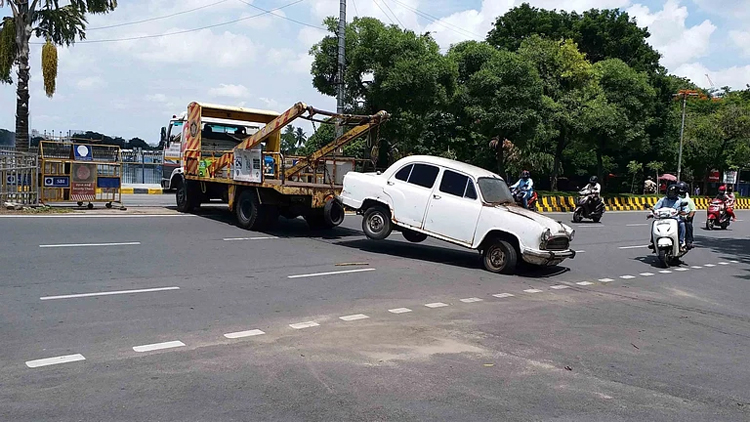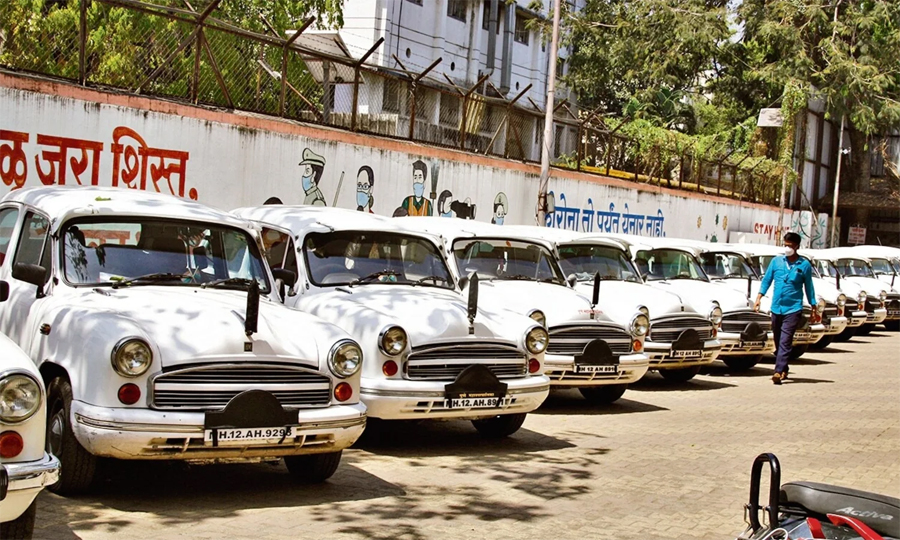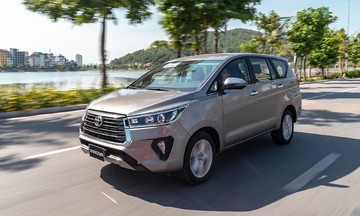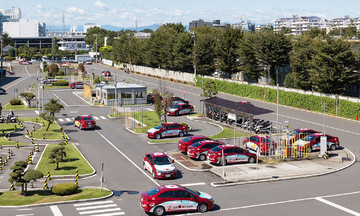India's transport minister, Nitin Gadkari, addressed the scrapping of old vehicles, noting that India is eliminating 4,000 old vehicles every week due to safety concerns. He emphasized that worn brakes and aging mechanical parts on older vehicles increase the risk of accidents.
Current policy in India requires vehicles to undergo safety inspections based on their age. Commercial vehicles over 15 years old and private vehicles over 20 years old must pass emissions, brake, and structural integrity tests. Vehicles that fail are issued an End-of-Life Certificate, ensuring their permanent removal.
 |
An expired public vehicle is towed away. Photo: IANS |
An expired public vehicle is towed away. Photo: IANS
One reason for the high weekly scrap rate is the expansion of infrastructure. Over 60 registered scrap centers operate across 17 states, supported by 75 automated testing stations in 12 states. Uttar Pradesh leads with 15 facilities and has processed nearly 19,000 vehicles, including many public vehicles.
The government aims to establish a scrap center within 150 km of every major city. This makes the system more accessible to vehicle owners, addressing an initial barrier to adoption.
The policy is designed to make scrapping financially worthwhile. Owners receive scrap value equivalent to 4-6% of a new vehicle's price, while manufacturers offer discounts of up to 5% on new purchases. States may add incentives like road tax refunds and registration fee waivers.
This policy offers greater benefits than traditional informal scrapping, which yielded little money and lacked safe disposal. Now, scrap steel, aluminum, copper, and rubber are reused in manufacturing, cutting costs and supporting a circular economy.
 |
A large number of scrapped vehicles belong to government agencies. Photo: Hindustan Times |
A large number of scrapped vehicles belong to government agencies. Photo: Hindustan Times
Many scrapped vehicles belong to government agencies. In Uttar Pradesh alone, over 16,000 public vehicles have been scrapped. Regulations mandate the removal of public fleets over 15 years old, ending the previous practice of selling them cheaply.
This not only creates demand for new vehicles but signals to private owners that the system is reliable and nationwide.
Despite these efforts, private sector participation remains low. An estimated 2 million vehicles in India are over 20 years old. Many owners retain them, often due to sentimental attachment, lack of awareness, or uncertainty about replacement costs.
Participation varies regionally. States with better facilities and awareness campaigns see more voluntary scrapping, while rural owners face access challenges.
Old cars and trucks lack safety features and pollute more than modern vehicles. Their removal is expected to reduce accidents and emissions in cities struggling with air quality. Registered centers ensure the safe handling of fluids, batteries, and other hazardous parts often mishandled by informal scrap yards.
Recovered materials reduce mining pressure and import reliance, aligning with broader sustainability goals.
The current scrapping rate shows progress, but the real challenge is scaling up to handle the millions of old vehicles still on the roads. Facilities need stable funding, and the auto industry must offer affordable replacements.
My Anh











